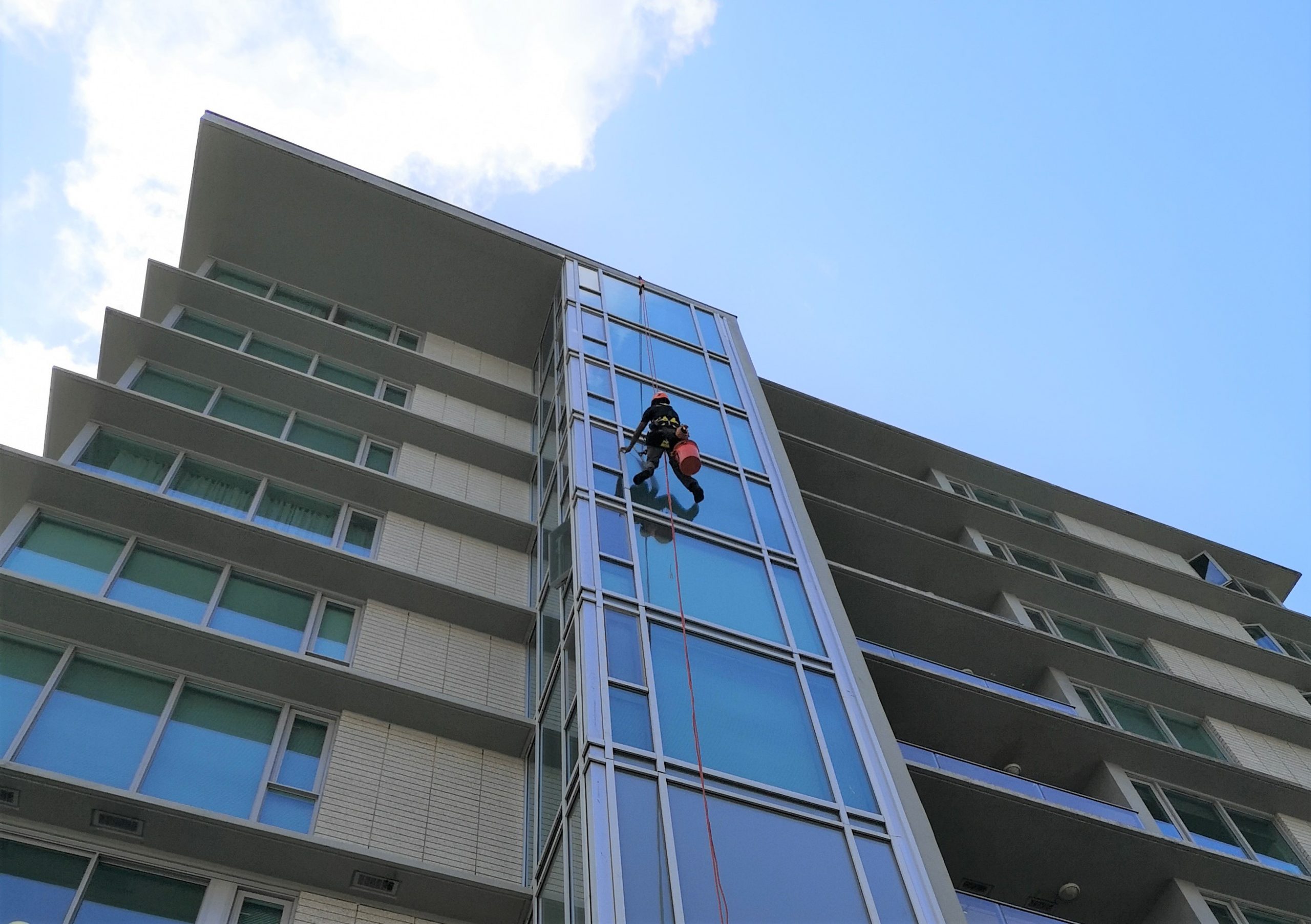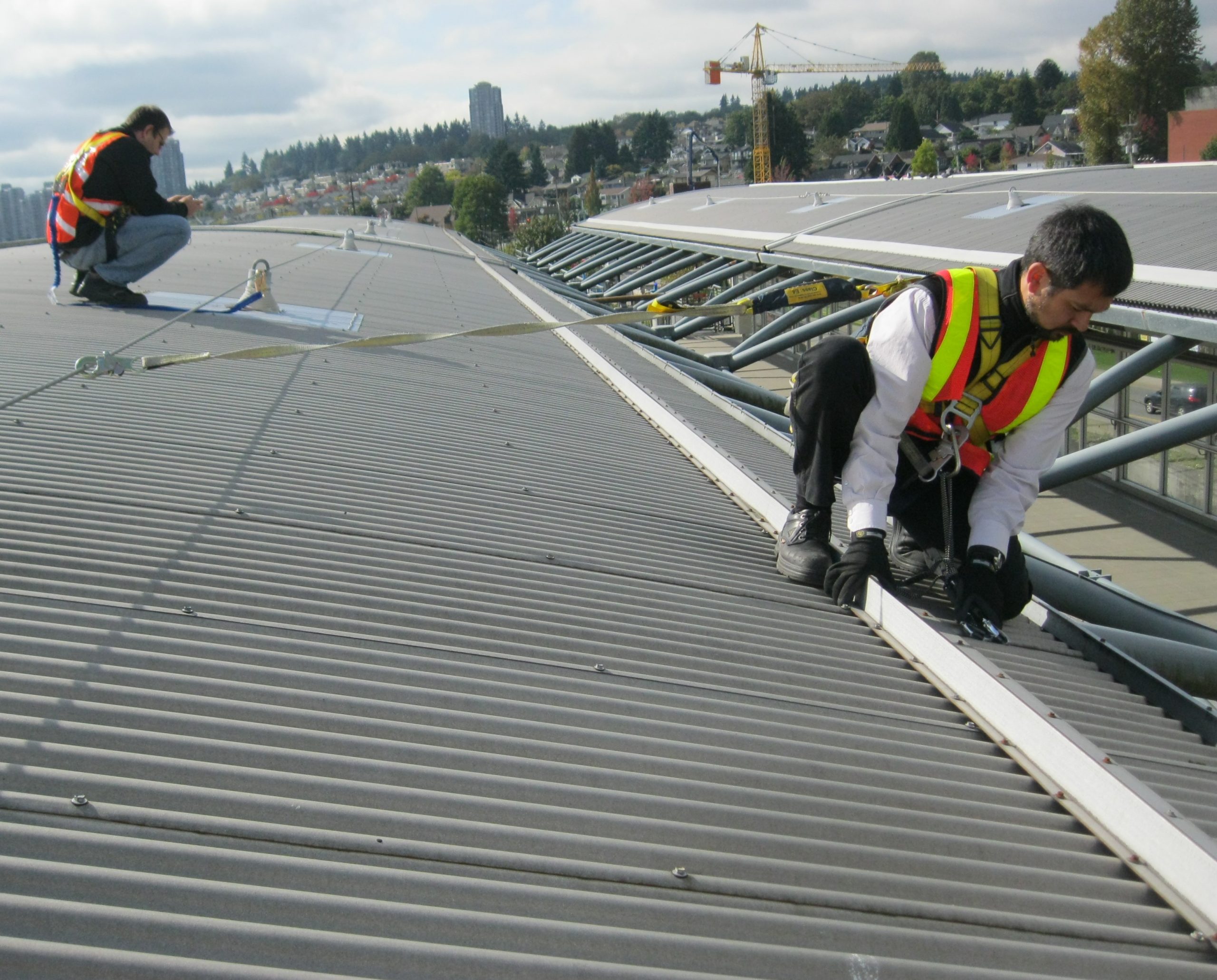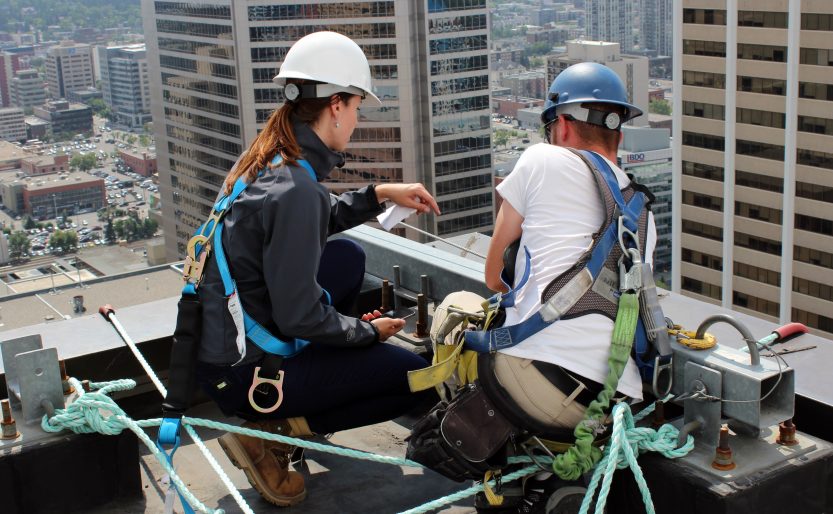Whether working on an active construction site or in an operations and maintenance setting, fall protection is critical to ensure the safety of workers and building occupants. From mandatory training and PPE requirements to on-site system documentation, provincial Occupational Health and Safety (OHS) regulations can vary, but industry standards generally refer to the Canadian Standards Association (CSA)—or failing that, the American National Standards Institute (ANSI).
With that in mind, Kelsey Van Steele, Associate at RJC Engineers who also specializes in maintenance access consulting and fall hazard risk control, says fall protection is generally mandatory for any work conducted at three metres (10 feet) or higher, or when a fall from any height would subject the worker to risk of injury. Meanwhile, all work occurring at elevations of 25 feet or higher requires a written, site-specific fall protection plan.
“Fall protection planning typically includes performing a documented fall hazard assessment, implementing risk control measures, and establishing a rescue plan,” she says. “Additionally, all workers performing work at heights are required to undergo fall protection training suitable to their environmental exposures and the equipment, as well as the compatible PPE they will be required to use.”
In terms of documentation, a system manual must be present and accessible at the building site as part of the system usage process for all permanent fall protection equipment and building maintenance access systems. This includes everything from roof plan drawings through to historical engineering reports, maintenance records and usage logs. Examples of permanent equipment requiring documentation include building maintenance units (BMUs), swingstages, gantries or roof cars, davit systems, fall protection anchors, lifeline systems, and suspended access anchor systems.
Fixed ladders, platforms, and fixed guards generally do not require documentation.
In addition, Van Steeles warns that recently issued industry codes stipulate mandatory documentation for counterweighted guardrail systems (CSA Z259.18). Although this standard has not yet been adopted by all jurisdictions, it is considered industry best practice.
 Maintenance & reviews
Maintenance & reviews
While all permanent fall protection equipment and building maintenance access systems require review prior to first use, Van Steele says they also must be reviewed annually, at minimum, or more frequently as directed by the engineer of record for the system.
“Load testing and NDT materials testing is required for some types of equipment prior to first use, and then at five-year intervals or more frequent as directed by the engineer of record for the system as indicated in the system manual documentation,” she explains. “Workers have a responsibility to confirm with the building or property manager that the equipment is up to date with reviews prior to use, in addition to reviewing the system manual documentation for any limitations.”
Keeping up with code changes
Code changes can happen often, and as such, they should be monitored. For an example, Van Steele points to recent updates to industry standards governing suspended operations (CSA Z91-17 and Z271-20) that may have implications on documentation, periodic testing, and system layout requirements depending on the type of equipment on the building.
“There are also notable changes to testing and engineering review requirements for active fall protection systems (lifeline systems, fall arrest, travel restraint anchors systems etc.) soon to be issued in the latest edition of the CSA Z259.16 standard (estimated publication later this year),” she says.
Compatibility of equipment 
On a final note, Van Steele urges workers to be aware of potential compatibility issues with PPE, connecting components and different fall protection systems or other types of permanent access equipment.
“There is a misunderstanding in the industry that there is a ‘one-size-fits-all’ approach to fall protection equipment, when in fact system equipment, components, and subsystems need to be evaluated for compatibility with one another based on the site-specific conditions,” she warns. “Just because the harness or lanyard says it is certified to CSA standard for that particular product type, doesn’t mean it is safe to use everywhere. Equipment must be selected by a competent person knowledgeable in the area of fall protection for the specific work activity and the environment in which it is being performed.
For more information on jobsite safety and fall protection, please contact: Kelsey Van Steele – RJC Engineers or visit www.rjc.ca







